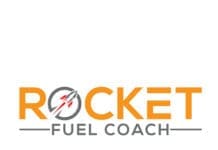Publisher’s Note: Mark Wichern, the owner of Veritas Restoration, is also the owner of Restoration Coach, the Parent company of Veritas Restoration. He’s an expert in mold.
His background is vast. He’s been an Instructor for the IICRC since 2004 and has taught thousands of students throughout the U.S., including many Insurance Adjusters, Attorneys, consultants, property managers, maintenance crews and builders. He also taught and worked at the Hydro Lab in Noblesville, Indiana, taking it upon himself to learn from the best of the best. Mark has seized every opportunity to learn about the restoration industry and all drying aspects of the business, from commercial large loss, emergency planning, hurricane preparedness, high heat drying, etc. He’s worked with top industry professionals in every arena of the restoration field at the Hydro Lab, including being present for lab testing of the Dr. Michael Berry Study with the EPA to discover how long it takes for mold to grow on different materials. You might say he is one of the Pioneers of the industry.
 So, what is mold? Mold is a microscopic fungi that plays a major role in causing decomposition of organic material, enabling the recycling of nutrients throughout the ecosystem. A question I hear a lot is ‘how big is a mold spore’? A mold spore is 2-10 Microns in size.
So, what is mold? Mold is a microscopic fungi that plays a major role in causing decomposition of organic material, enabling the recycling of nutrients throughout the ecosystem. A question I hear a lot is ‘how big is a mold spore’? A mold spore is 2-10 Microns in size.
Mold can become present, when water enters our home or business from many sources, including a leaking roof, ground water through the foundation, condensation, plumbing and appliance leaks, cooking and cleaning. Molds are ubiquitous in nature, and mold spores are a common component of household and workplace dust.
The question is, “Should I be concerned?” When mold spores are present in large quantities, they can present a health hazard to humans, potentially causing allergic reactions and respiratory problems.
Research on the health effects of mold has not been conclusive. The term “toxic mold” refers to molds that produce mycotoxins, such as Stachybotrys and Chartarum and not to all molds in general. Some studies claim that exposure to high levels of mycotoxins can lead to neurological problems. Prolonged exposure, e.g., daily workplace exposure, may be particularly harmful.
Why do some molds have mycotoxins? Mycotoxins are mold’s defense against other molds and bacteria. The real concerns with toxic molds can be opportunistic pathogens that look for a compromised immune system, such as a person over age 65, under age 2, recent surgery or an infection.
What should I do if I discover mold and how do I get rid of it?
Disinfectants: Can I just put bleach on it? Unfortunately, bleach is a hyper chlorite which is inactivated by organic matter, i.e. mold. Does killing a mold spore make them safe? No, actually killing a mold spore may release the mycotoxins which may pass directly through HEPA Filtration (High Efficient Particulate Air Filter). Dead mold spores are still allergenic. Unfortunately, mold spores must be completely removed from the built environment. If not removed, mold spores go dormant until excessive moisture is reintroduced, and they begin growing again.
How does a disinfectant work? Think of a mold spore as a balloon. If the spore is toxigenic, the mycotoxin is stored inside the spore or in this case the balloon. The mycotoxin is the spore’s natural defense system and is released when it is attacked. The spore’s outer membrane is ruptured by the disinfectant (bleach) and this allows the mycotoxin to be released into the air. Even when mycotoxins are not present, this rupturing makes them smaller and easier to breathe deeper into our lungs.
Is killing a mold spore really what we want to do? Thankfully, there is another alternative. Remove the mold spores through proper disposal, cleaning and filtration and then correct the moisture problem!
What are the factors needed for excessive mold growth? An organic food source, moisture, stagnant air, an acceptable temperature range, IE.68-86 deg. F. for most mold growth and the big one TIME!
What is an ORGANIC FOOD SOURCE? Building Materials such as Drywall Paper –Trees, 2 x 4 Studs – Trees, Boxes – Trees, Natural Carpet Fibers – Wool, Bathroom Tile – Bacteria, Dead Skin, and Adhesives –Animal Glue (OSB Subfloors).
So, how can we prevent excessive mold growth? It’s Simple… Eliminate the factors for growth, respond quickly to water losses and stop the water intrusion.
• Dry wet materials as fast as possible, using higher temperatures with special Low Vapor Pressure Dehumidification.
• Evaluate psychrometric conditions, moisture map and document progress until all wet materials have been dried back to their normal equilibrium moisture content.
• Call Veritas Restoration for a Moisture Inspection – 850-835-5677. Call Restoration Coach for Mold Testing – 800-560-7903.






























































